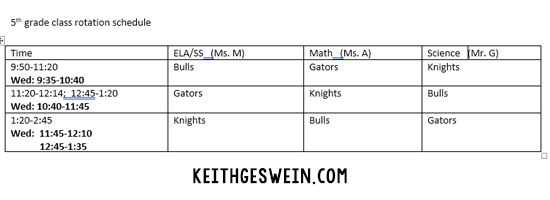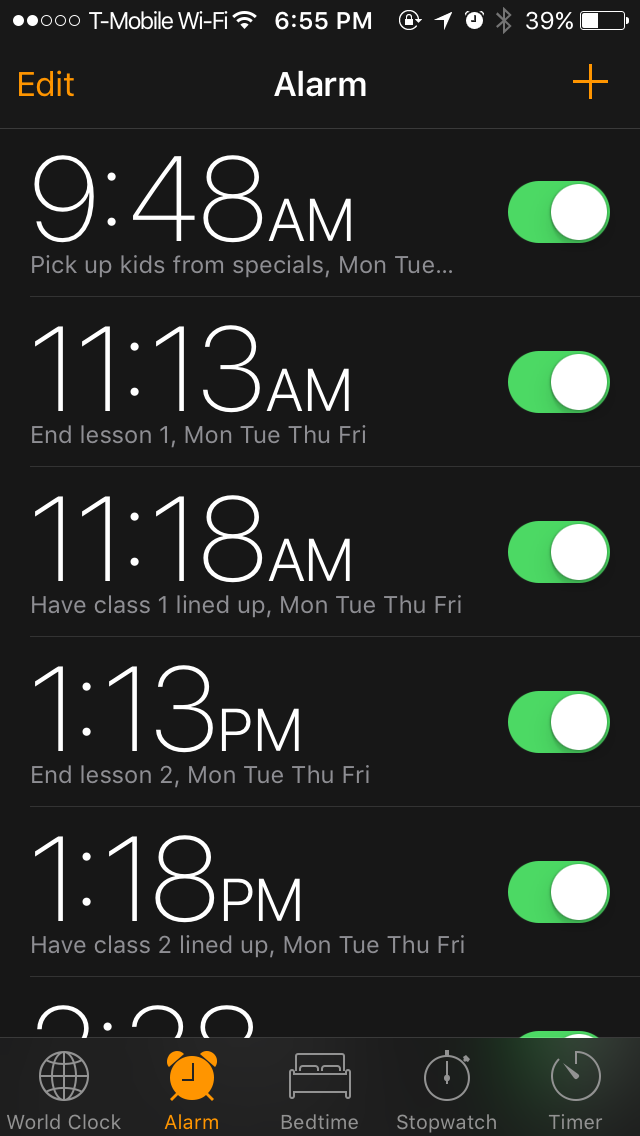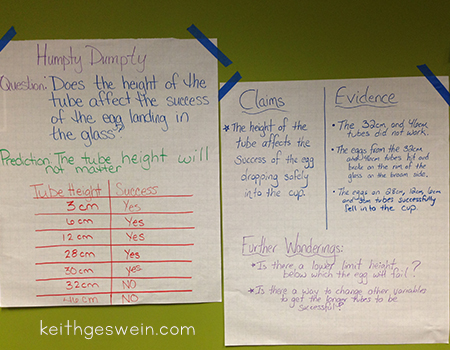
This is Part Two of my blog post about departmentalizing in upper elementary. Click here to read part one, which describes five reasons why departmentalizing benefits teachers and students in upper-elementary grades.
I hope you’ve read part one of this blog post to learn five huge benefits of departmentalization in upper-elementary school. My team was departmentalized for two years and I saw many ways it helped students and teachers. It rejuvenated my desire to teach. It helped me get to know more kids. I finally felt knowledgeable about the content I was teaching.
However, if you are considering departmentalizing for your grade level, there are some challenges that you’ll need to be prepared for.
Challenge: Being the reading teacher
At my school, reading was the subject that administrators scrutinized more closely than any other subject…and it wasn’t even close! It seemed like several academic coaches on our campus dealt with reading, while one coach was there to support math AND science. When district officials did walk-throughs, they spent most of their time observing the reading teachers, then sucking them into meetings to provide tons of “constructive feedback.”
One thing you can do about it: If you are considering departmentalizing in your grade, be sure the teachers who teach reading really love that subject because they are going to bear the brunt of the pressure from administrators.
Before we departmentalized, we had an honest conversation about each teacher’s strengths and weaknesses. If you are considering departmentalizing, be sure your team discusses which subject area each teacher feels confident in. Be sure the reading teachers understand they are probably going to feel more pressure from administrators than the people who teach the other subjects. It’s an extremely important conversation to have.
If teachers are hesitant to teach reading, see if there are things the rest of the team can do to help lighten their load. I regret not doing more for the reading teachers during the time we departmentalized. I should have been looking for little things to take off their plate because they got sucked into way more meetings than I did. (I taught science.) I could have taken their dismissal duty a few times. I could have brought their kids back from lunch a few times a week. I could have brought them coffee once a week. Anything to let them know that I understand that they, as a reading teacher, were under more pressure than me as the science teacher.
Challenge: Scheduling
When we departmentalized, each fifth grader rotated among three teachers each day for ELA/SS, Math, and Science. Each class period was 90 minutes. I adore making schedules, so I volunteered to create the schedule each year. Here was what our master schedule looked like:

(Note: We used the nicknames of the three closest major colleges as names for each group of students. We also had early-release on Wednesday, which is why you see different times for that day.)
It was important that each student had an equal amount of time in each class every day. There were a couple of days when I saw two classes for the full 90 minutes, but one class for 45 minutes due to an unexpected special event that came up at the last second. All the fifth-grade teachers hated that because it wasn’t fair to the last class that their instruction got cut short. They had to play catch-up for several days to make up for that lost time.
One thing you can do about it: It’s important that you have someone who can adapt the schedule and communicate those changes to the team, even if it’s at the last second. Then when a special event is announced, everyone knows this person will handle creating a new rotation schedule for that day.
While we certainly discussed the schedule as a team, your team needs a go-to person who can quickly change the schedule on those days when an assembly is announced five minutes before the kids arrive. This person must also be able to clearly communicate these changes with the team. Your principal is NOT the person for this job! It should be a member of your team who knows the schedule and how changes are going to impact things for each class.
It’s also important that the other team members respect these changes and go with the flow because there’s not always time to discuss scheduling changes.
Challenge: Ending class on time
It is imperative that each teacher ends class on time so students can have the full amount of time with their next teacher. There were a few instances when other teachers had to chat with me because I ended my science class five minutes late. I explained that we really got into an experiment or cleanup took way longer than I thought. Guess what? They didn’t care. All they cared about was losing five minutes of instruction time with the kids that I kept late. Plus, this teacher had to stand in the hallway and monitor the kids who were scheduled to be in my room.
I soon realized that I ABSOLUTELY HAD TO BE DONE WITH MY LESSON 2-3 MINUTES BEFORE THE CLASS TIME WAS SCHEDULED TO END! So I set a ton of alarms on my phone to help me stay on schedule.

One thing you can do about it: I set an alarm seven minutes before each class was scheduled to end, which gave me time to wrap up my lesson. Then I had another alarm on my phone go off two minutes before class was scheduled to end so I could have all the kids lined up and ready to get to their next class on time. You could also have a student who is good with keeping track of time tell you when class is about to end. Do whatever it takes to get your students to their next class on time because it’s not like middle school where you can ring a bell in the hallway. Ending your class on time shows you respect the time of the other teachers on your team.
Challenge: Hallway transitions
NOTHING will shut down a team’s effort to departmentalize faster than students being loud in the hallway while they are switching classes! Other teachers will quickly grow tired of telling your students to be quiet while they’re trying to teach. They will not hesitate to go to the principal with these concerns. Administrators could tell you to stop departmentalizing if they are constantly dealing with kids being sent to the office for fighting or yelling while they are switching classes.
It is extremely important that your students remain quiet while switching classes. Next year in middle school, they can talk while they change classes. But not in elementary school. We told our students there was absolutely no talking while they change classes, even if they have to wait. They had to wait quietly in a line outside their next teacher’s door until that teacher allows them into their class.
It’s also important for teachers to stand in the hallway during transition times. Yes, there are a million things you could be doing to prepare for your next class, but we all know that fifth graders are going to try to get away with stuff if they are left unsupervised. So it’s important to respect the other teachers in your building by keeping your students quiet during transitions. I have heard of a school where the fifth grade departmentalized at the beginning of the year, but the principal made them stop because there were too many behavior problems when the kids switched classes.
These are just a few of the challenges that you’ll need to prepare for if you plan to departmentalize in elementary school. There are more that will arise. It takes a willingness to adapt and be flexible, but I feel like departmentalizing has so many more pros than cons for teachers and students.
Regardless of whether or not departmentalizing would work at your school, I’d like to thank you for all that you do for your students every day!






